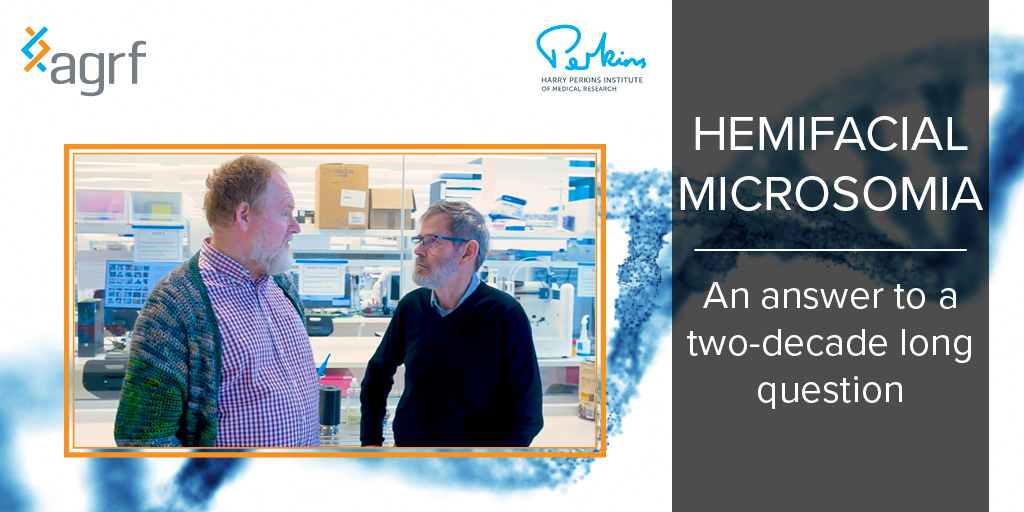Hemifacial Microsomia: A Twenty-Year Genetic Search Comes Full Circle
/Dr. David Chandler and Professor Nigel Laing AO discuss their research - and its subsequent results, twenty years on.
An exciting resolution to a twenty-year search, with the genetic cause of hemifacial microsomia identified by geneticists locally in Perth and, overseas, at Yale University.
Hemifacial microsomia, a condition where one side of the face is underdeveloped and doesn’t grow normally, has seen a notable development with the discovery of the gene behind the disease– meaning now, those who have the condition will be able to find out if they are passing it on to their children.
For Dr. David Chandler of AGRF’s Perth node, it all began twenty years previously, when his PhD studies saw him work with the largest known family with the condition – nine family members were affected. Renowned geneticist Professor Nigel Laing AO, of the Harry Perkins Institute of Medical Research, jointly supervised his PhD project. They found at the time, they were limited by the technology available, and were unable to genetically sequence at length or cross reference their findings.
“We could narrow down the hunt from three billion base pairs of DNA to 14 million. We were looking for a marker shared by everyone who had the disease and David Chandler found that on a region on a particular chromosome, but without the genetic sequencing technology available today, it wasn’t possible to refine the search further,” said Professor Laing.
In 2020, Professor Andrew Timberlake of Yale got in touch; he’d been analysing the genetic code of other families with the condition, had scoured published literature and found their twenty-year-old research – and, he had identified the possible gene for hemifacial microsomia.
Dr. Chandler and Professor Laing found that they still had access to the DNA of members of the original family that had been studied, and results were consistent with them as well as Professor Timberlake’s findings. The gene had been found, and a decades old question answered.
The full research has been published in Nature Communications – and you can watch David and Nigel discuss their work below.



